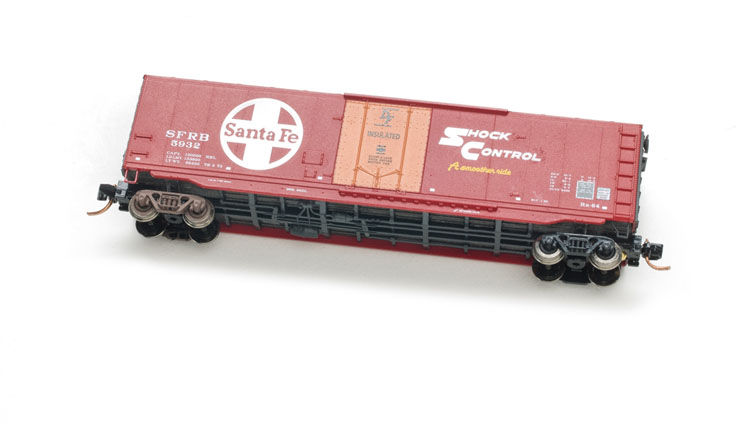
Without body-mounts, my freight trains with mid-train helpers can’t climb Tehachapi Pass without littering the terrain with derailed cars. And by using couplers of all the same brand, I cut down on inadvertent uncouplings.
An exquisite car like this earns and gets a bit of a premium price, but in my case I save about five bucks on the replacement couplers and wheels I’d have to add. Also, I’ll almost certainly get a perfectly centered, perfectly installed coupler, as opposed to my effort.
Eliminating the black holes – Improve ready-to-run freight cars with a little paint
So what is there to do on a car like this beyond taking it out of the box and checking it for wheel gauge and trip pin height? Well there’s weathering, which eventually I’ll do, lightly in this case because the car is so darn pretty, and there’s one other thing – painting.
Railroad standard practice is that wheels and couplers on the prototype not be painted, as paint can hide cracks or flaws. Besides, given the marvelous things steel makers can do nowadays, these parts quickly oxidize to a rich mineral brown coating that’s attractive and also protects them from further oxidation (that is to say old-fashioned rust, the arch-enemy of railroading).
But those same parts on models can benefit from a bit of color. I can paint the trucks brown because that’s the color they often are on the prototype. For us, a major advantage of painting trucks is that we can get rid of the shine that’s characteristic of the unpainted engineering plastic that’s used to manufacture these parts.
The advantage of such plastics is that they’re slippery, as you well know if you’ve held a truck while changing out the wheels. These slick plastics give axle ends a smoother bearing surface in which to turn more freely.
Painting also makes our trucks more visible. With unpainted black trucks, the cars look as if they’re floating on air. And I think cast brown trucks look worse and even more toylike.
Painting trucks and wheels
You certainly don’t need to crank up an airbrush to paint trucks and wheels. Just remove the trucks from the car, pull out the wheels, and paint with a brush, lightly of course. Don’t paint the insides of the trucks, as you don’t want paint anywhere near the axle-bearing surfaces, and you can’t see them on the finished car anyway.
When painting wheels, take the same precautions. Don’t paint the axle ends, as they’ll be hidden by the journal boxes, and it would interfere with the low friction of that slick plastic on the needle-point axles. Also keep paint off the wheel treads. If you do get paint on them, the paint will eventually transfer to your rails. Enough grunge ends up there without adding more.
Lightly drybrush the truck details with a little white, and those black holes under your cars will be replaced by nicely detailed parts you can actually see. And nothing on a car has more detail per scale square foot than a truck.
And now, the stirrups
For several decades Micro-Trains was the undisputed champion of accurately detailed freight cars, but one worrisome detail always bothered me – the corner stirrups. These were scale size and exquisite, and they were usually cast in that slick, black plastic, making them less susceptible to damage.
Unfortunately, casting them in the black plastic makes them invisible. The solution to this problem, as you’d probably guessed, is paint. I always brush-paint them first with a gray acrylic primer. A primer will save you having to apply two or three coats of color.
Next comes the color. You don’t need a precise match; being in the ballpark will do. I mix mine from an inexpensive set of tube acrylic paints from the craft shop.
A nice thing about these mini-projects is that you can do them when you don’t have much time. You don’t get a lot of instant gratification in model railroading, but here’s one little area where you do.

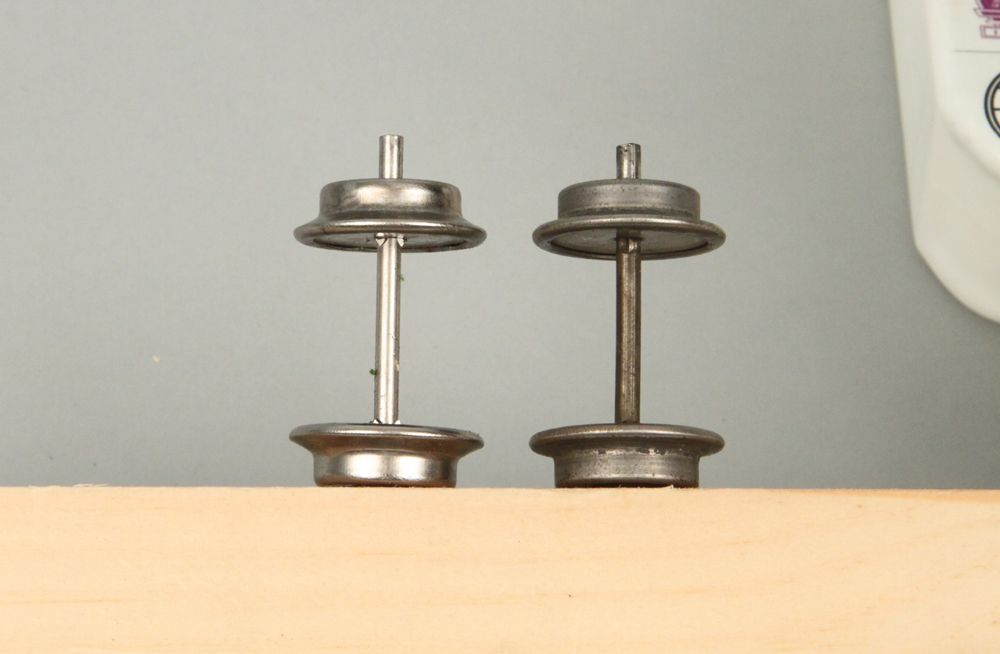
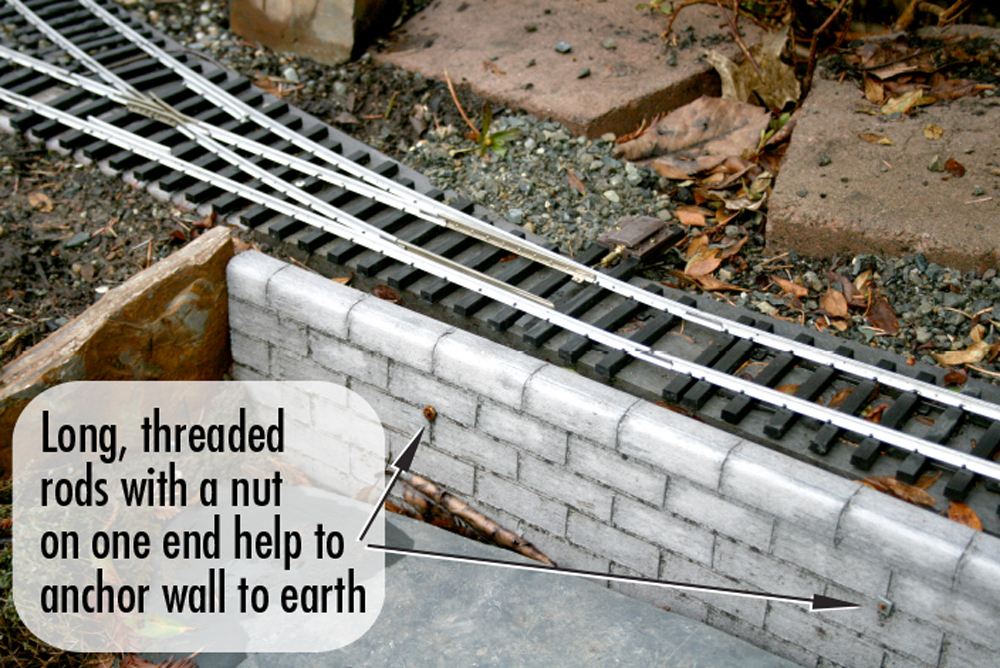
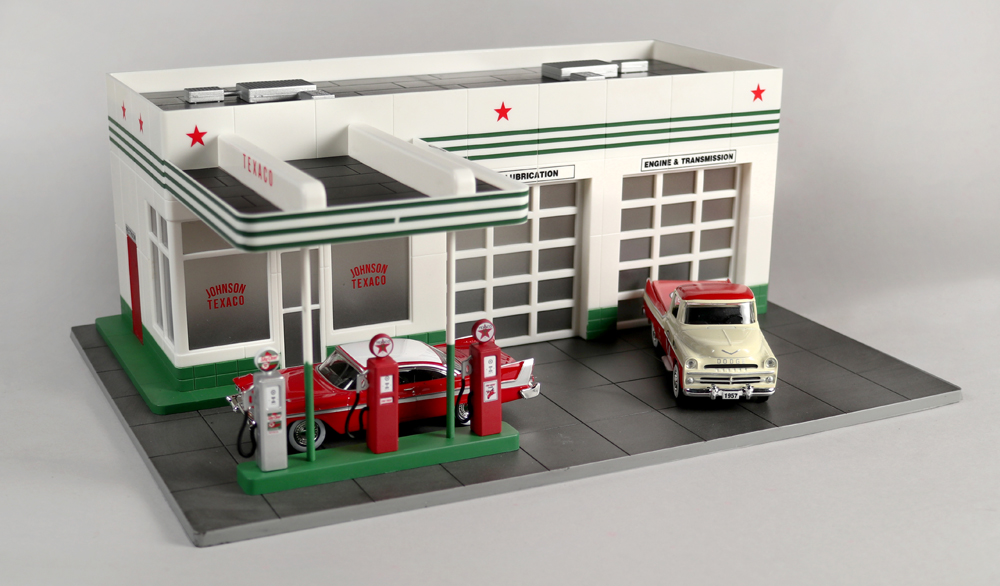
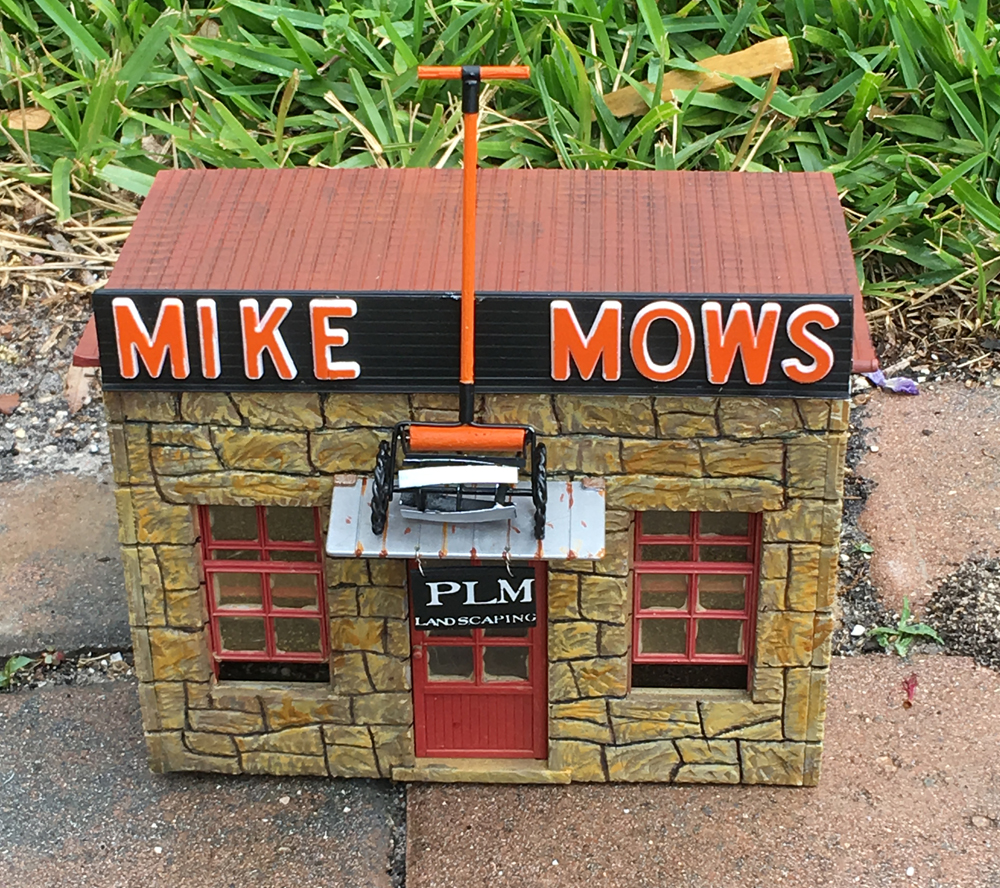




I just got my copy of the magazine yesterday and wanted to comment. First, it’s about time someone mentioned painting trucks and wheels on N scale cars. It’s a lot of reward for little effort but so few modelers do it. I guess it goes back to the collector’s mentality. But I wouldn’t stop there. I always paint the insides of my trucks. If eliminates the shiny black plastic that’s still visible if you don’t. I use masking tape cut into squares approximately 1/16″ to cover the holes for the axles, and a small piece of masking tape to cover the lower plate for the coupler box on truck mounted couplers. Then I use my air brush to spray a base color, usually grimy black, over the entire truck. I’ve had zero problems doing it this way.
I also paint the couplers a rust color. I’ve had a few stiff couplers the first time coupling the cars together, but a good hand push permanently loosens them up. Coupler pins are also painted.
Finally I paint the floors and coupler pockets on all my cars. This gets rid of the shiny black (usually) plastic. These are painted the same color as the main part of the car body, but if the ends are painted a different color, then that’s what I paint the floors.
A little black/brown weathering and the cars are ready for service. 100% improvement.
Hi all,
Here are some answers to your questions.Scott: Usually I use Roof Brown. Dave, nice to hear from you, and you’re absolutely right. Truck-mounted couplers work just fine in almost all cases, just not when climbing mountains using helper engines. Mark, I think you’re right. I decided to use the Micro-trains car so I could show the effect of painting the stirrup.
Thanks for reading my column.
Jim – regarding body-mount vs truck-mount…..unless you are running 30 cars trains and trying to back into yard tracks, my truck-mounted couplers work just fine. The key is to install the best trackwork possible. The Atlas Code 55 system is excellent; my layout is entirely sectional track – no flex with almost zero derailments.
Jim- what color or mixture of colors do you use for painting your trucks?
Jim- Wish you would have included a photo of the detailed freight car you described in the story….a picture is worth a thousand words.
Yeah I body mounted about 500 cars. No I don’t have a barn size basement, I run on a modular N-Trak module club layout. Try backing 80 cars into the setup yard. The big yard setup tracks are 25 feet. And yes the Scale Trains Big blows will pull it, or four Kato SD40-2’s, watch the light dim when it starts. Tip the New Micro-Trains scale coupler will fit on the back of the tender of the Broadway Limited M1a’s in the factory mounting holes and will slip into the front coupler of the road engine. Neat double header. And yes the Pennsy Lines East was a believer in blind flanges, drivers 2 &3 were blind on the originals.
Great article but how about a few photos of your car trucks painted.
Great suggestion for quick and easy weathering. I second the comment about body mounted couplers. Truck mounted couplers remind me of the 50’s and early 60’s in HO modeling. I haven’t converted by fleet, so I’m very careful when shoving up my 3 track helix. And, that was only for a video.
Thanks, good insight to weathering without screwing up the wheelsets.